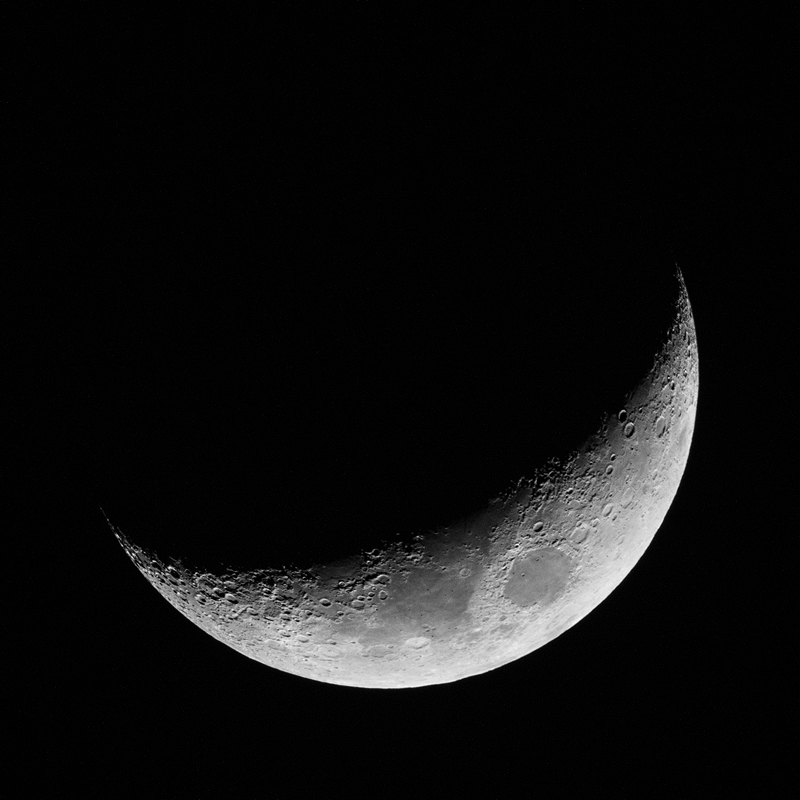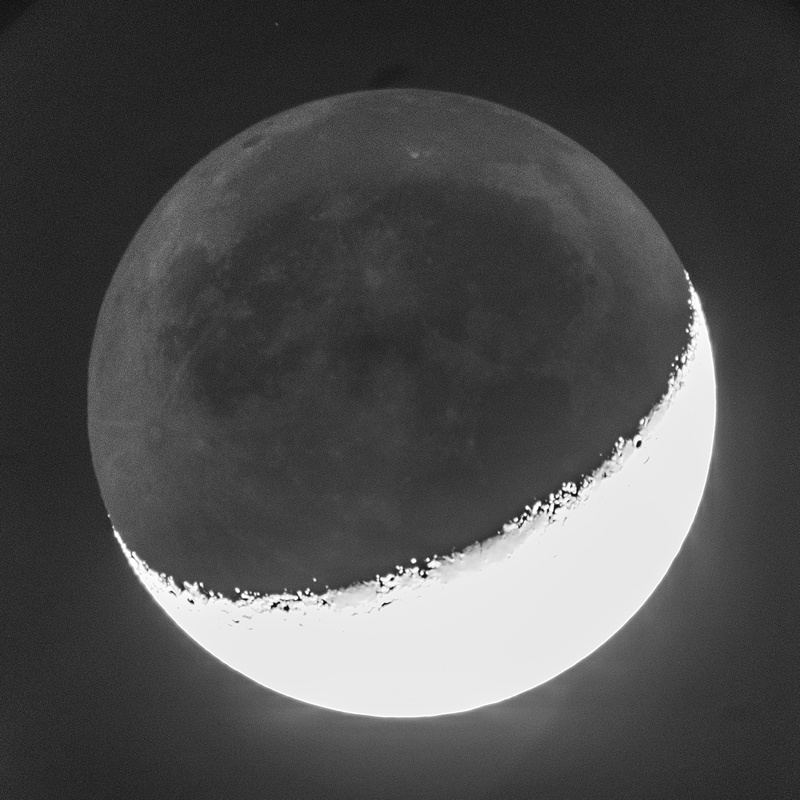Flame, Horsehead, Monkey Head, Rosette,
Orion, Running Man Nebulae
Posted: 18 January 2021
Saturday night, 16 January 2021, was partly cloudy and breezy. The sky cleared on Sunday, 17 January.
|
Open: Sunday, 17 January 2021, 2000 MST Temperature: 59°F |
Session: 1588 Conditions: Clear |
Equipment:
12" f/8 LX600 w/StarLock
2" 24mm UWA eyepiece
2" UHC filter
Focal Reducer
Camera:
D850 DSLR
2005 MST: LX600 ON, StarLock OFF, High Precision OFF.
Viewed the Moon, 102X. Earthshine visible.
Mounted the D850 DSLR at prime focus + focal reducer + UHC filter.
Took these photos of the Moon (cropped and converted to Black-n-White).
1/320sec, ISO 1250

1/2sec, ISO 1250

2021 MST: dome OFF.
Focused on the star Betelgeuse and locked the 12" mirror.
2028 MST: StarLock ON.
I wanted to try some ISO 12800 imaging through the Explore Scientific 2" UHC filter to see how well digital noise would look. The results were very good. These images are StarLock autoguided, 5 minutes, ISO 12800, except for the Great Nebula in Orion (1 minute, ISO 3200).
NGC2024 (Flame Nebula) and IC434 (Horsehead Nebula)

NGC2174 (Monkey Head Nebula)

NGC2237 (Rosette Nebula)

M42 (Great Nebula in Orion)

NGC1977 (Running Man Nebula)

2130 MST: StarLock OFF.
2147 MST: dome ON.
2150 MST: LX600 OFF.
|
Close: Sunday, 17 January 2021, 2200 MST Temperature: 51°F |
Session Length: 2h 00m Conditions: Clear |
Comments are welcome using Email. Twitter users can use the button below to tweet this report to their followers. Thanks.
Cassiopeia Observatory Home Page
Copyright ©2021 Michael L. Weasner / mweasner@me.com
URL = http://www.weasner.com/co/Reports/2021/01/18/index.html
